 | Spartan-6 development board |
[HUN] [ENG]
|
This board was designed and soldered by myself. More or less it contains all the I/O elements I wanted to use back around 2010. It has an
RGB/VGA
port using
12 bits to produce
4096 colours, two
PS/2 ports for mouse and keyboard, a simple RC filter driven
stereo audio output line and one
USB Host port (handled by the PIC MCU).
During that time I wanted to avoid the SD card, which was a mistake of course. I thought that an
USB Pendrive can act as a storage controller.
Although this is true, still, an SD card would be useful now. If I designed this today, I'd surely apply an HDMI port and an SD card reader. Despites of the mistakes I had made,
it is still great for prototype development.
The card has dedicated programmer ports: one JTAG port for the FPGA and a standard 6-pin Microchip
programmer port (can be used with PicKit3 for example). There is a cheap SPI Serial Flash memory
(M25P40) on the board, too, which can hold the FPGA configuration so the FPGA can boot without
the MCU. All in all 3 programming modes are available for the FPGA:
- dedicated Flash,
- MCU slave serial programming
- and JTAG.
During the development the JTAG is used most frequently.
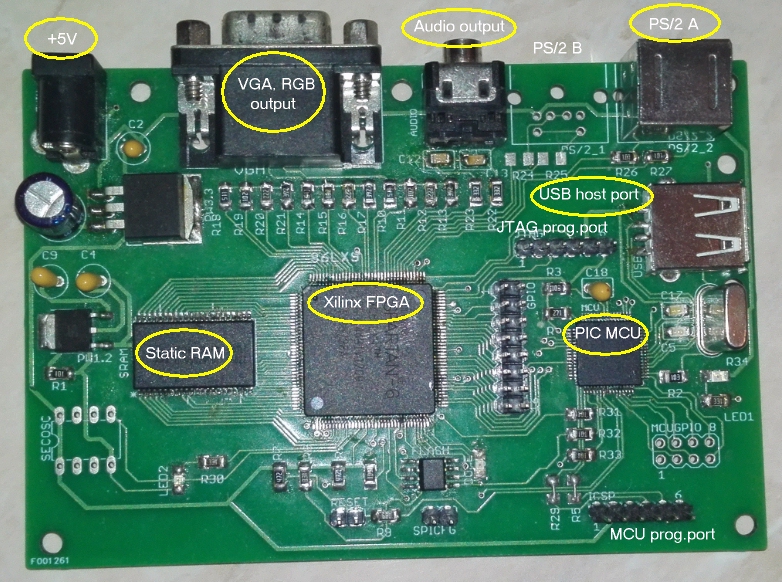
Click on the image to zoom
|
Main parts of the card:
- FPGA: Xlinix XC6SLX9-144P
- SRAM: ISSI 256Kx16 Static Ram, at 10 ns access time
- PIC MCU: PIC24FJ256GB106, handles the USB port, and can program the FPGA
- USB port: standard USB Host port for pen drives, mouses, keyboards, whatever. MCU needs the right firmware to use these devices though.
- VGA port: 3x4 bit RGB output plus H/V sync. Able to drive VGA or Euro Scard RGB inputs
- Audio port: stereo audio outout (driving with a Delta-sigma DAC)
|
Images:
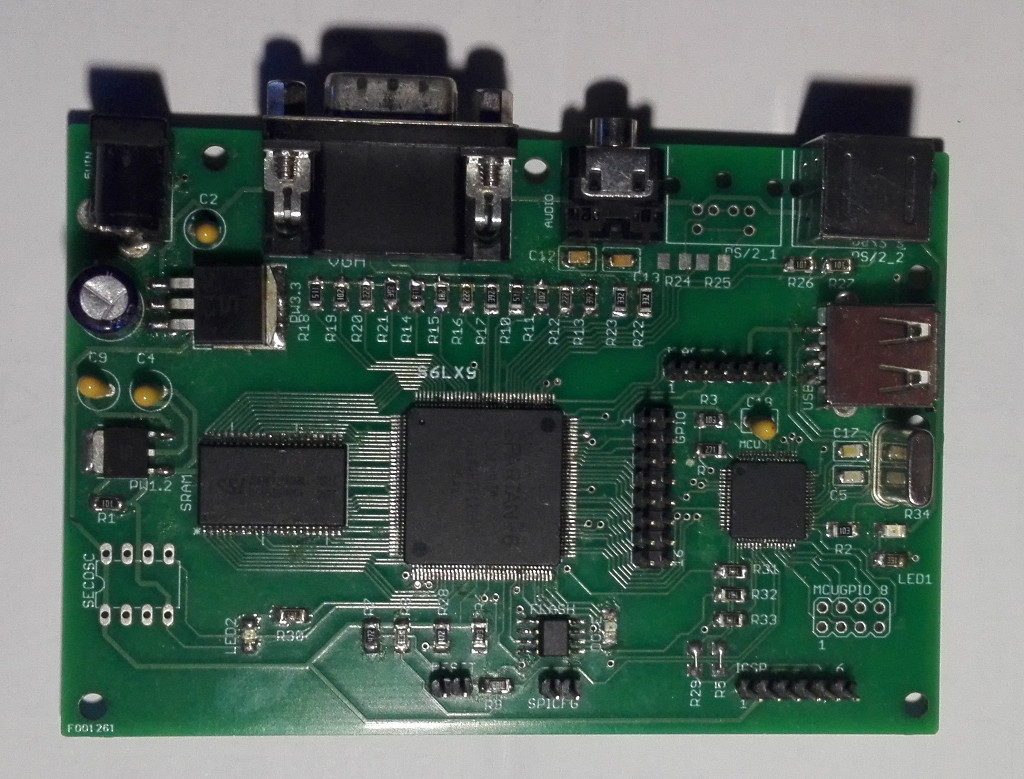
Above
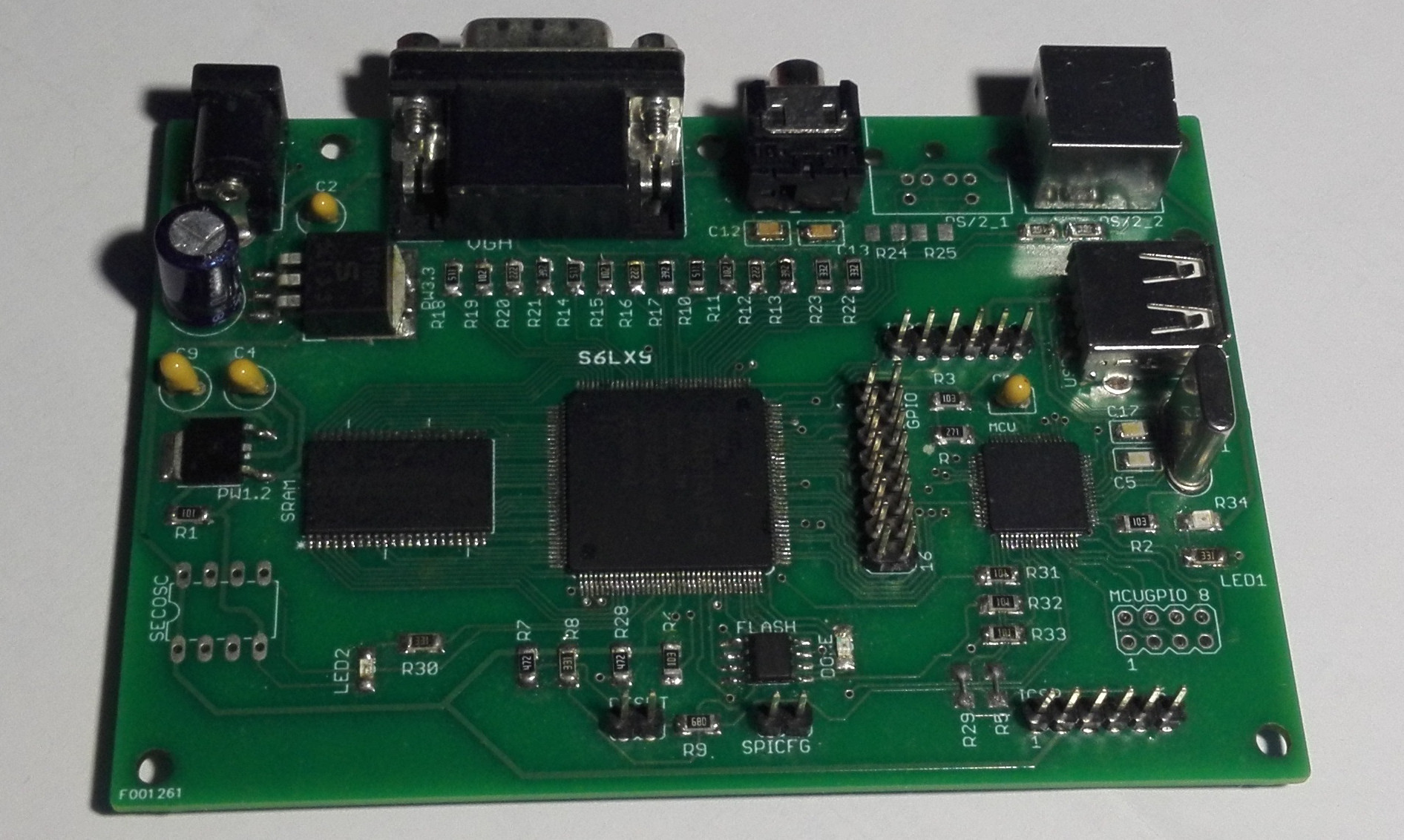
Above again
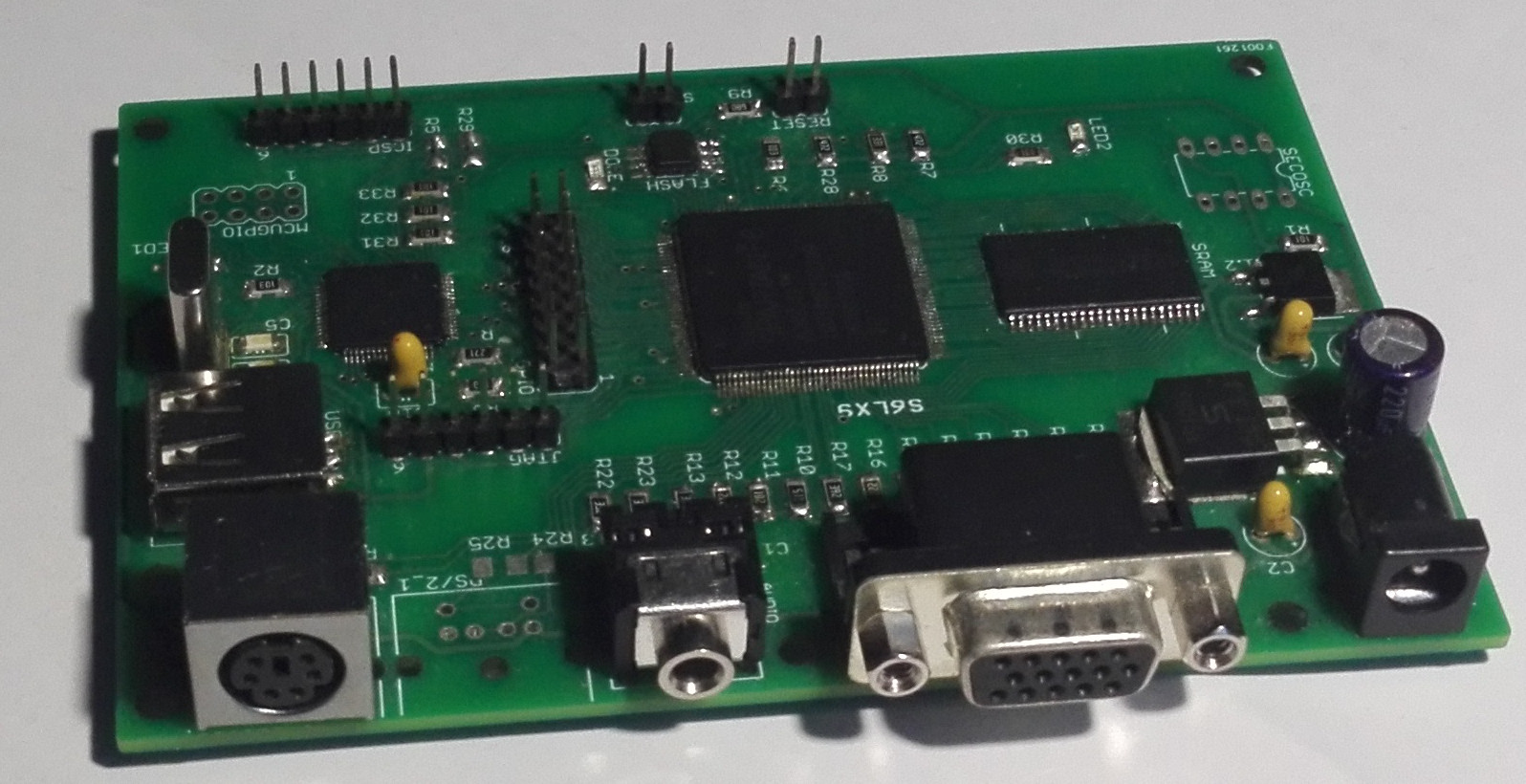
Connectors soldered in. One PS/2 port is not mounted yet
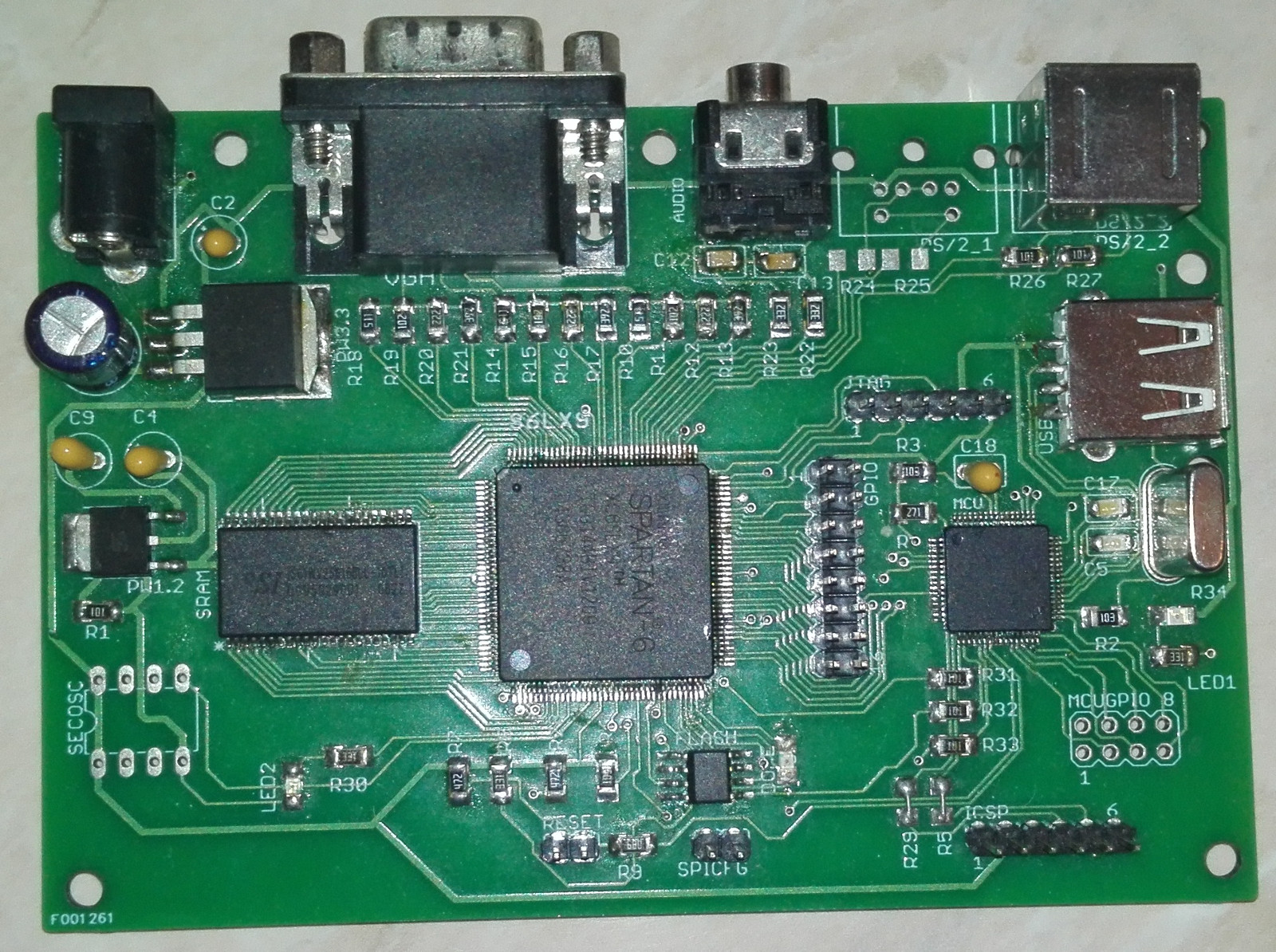
One more above
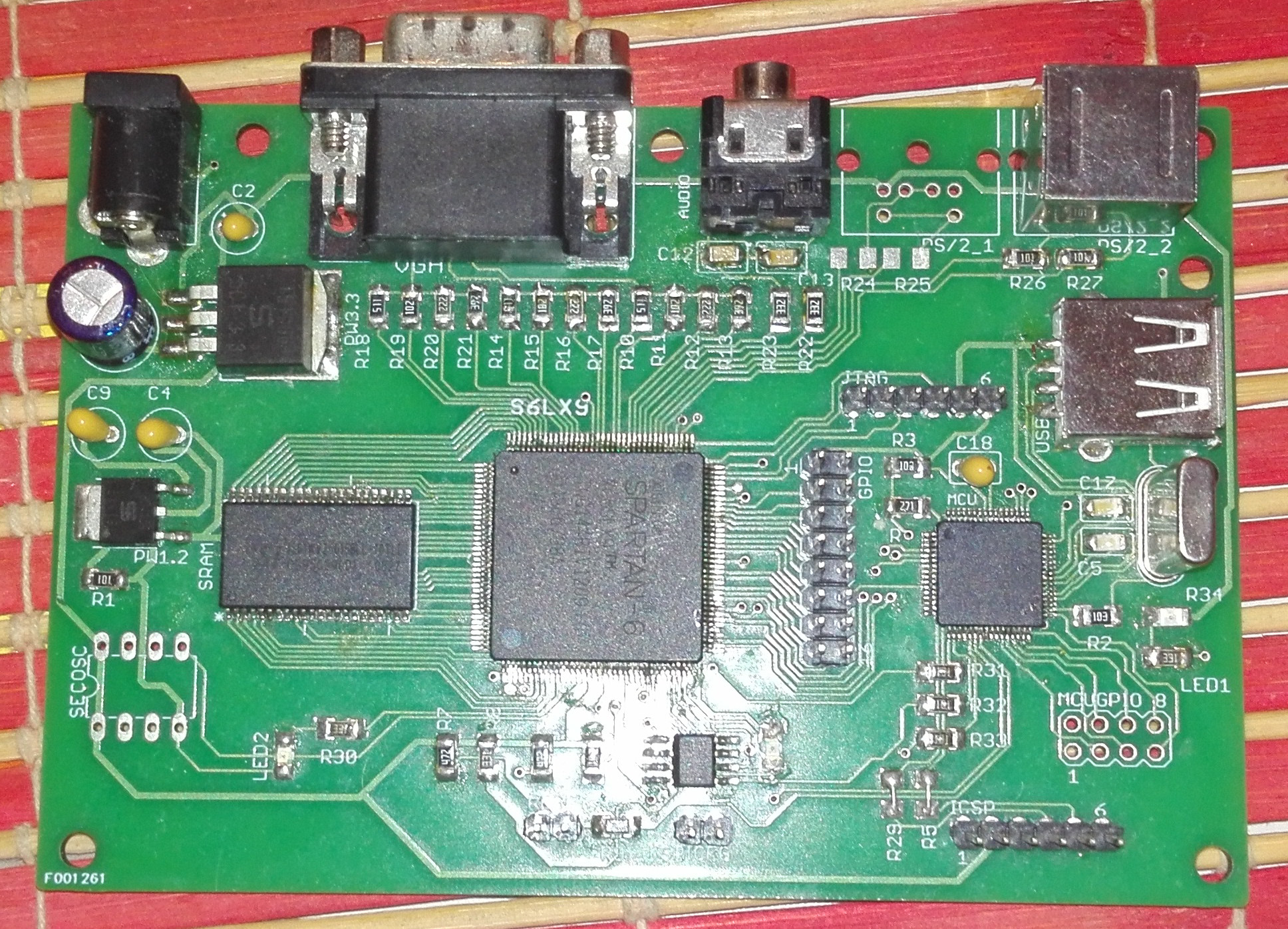
This one was taken in the kitchen :-)
[
Home]
[
FPGA development]






